The waters of the Bay of Bengal rippled below our aircraft as it nosed down on Port Blair, capital of the Union Territory of the Andaman and Nicobar Islands, which lie 1,250 km south of Kolkata. Those hues, an ocean shot through with vivid shades of blue and islands that were humps of green, were as evanescent as the colours on a butterfly’s wings.
When our aircraft soft-landed at Port Blair, we felt like we had been air-dropped in an alternate universe, un-ravaged by man. Mainland India, abuzz with a sense of desperate hustle, congestion and noise, seemed to exist in an alternate reality far, far away. Indeed, the archipelago of 572 islands (of which only 37 are inhabited and eighty-six percent are protected), is closer to Myanmar and Thailand than mainland India. Even fewer are accessible to tourists and have sandy stretches with nary a footprint on them.
The two-hour catamaran ride from the marine terminal at Port Blair to Havelock island across a heaving ocean would be bumpy and even gut-spilling, we had been warned. But it turned out to be enchanting for we watched a capricious ocean change colour outside our large picture windows – from blue to teal and then a deep jade-green. Another visual feast lay in store — a scenic drive via dense forests, parakeet-green paddy fields and areca nut plantations. By the time we arrived at our resort, Barefoot at Havelock, lush nature had ambushed us at every turn. And the salt-laden air was heavy with whiffs of romance.
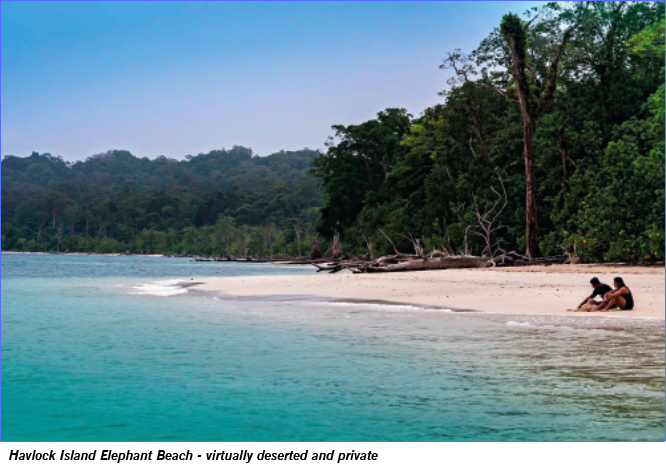
Snuggling in an unsullied corner of the island on Radhanagar Beach, Barefoot at Havelock intensified the feeling of romance. A complex of villas, cottages and tents, made from environmental-friendly, indigenous materials, Barefoot at Havelock yeasts out of the land in an organic way. The small foot-print resort encourages its guests to move around barefoot, and in our bamboo, wood and palm-thatched villa with its capacious wood deck, it seemed like the most natural thing to do. Sitting on the deck to bird watch became a favourite pastime with nature as our sole travel companion.
In harmony with nature
The air was heavy with the trilling of birds and the sigh of the wind; and scented with the fragrance of tropical foliage. At night, the chorus of crickets lulled us to sleep and we understood why on check in, we were handed small flashlights… “We do not light the pathways at night so as not to disturb the owls and other birds that roost on our property,” the receptionist answered our puzzled look. It revealed the eye for detail that this, the first privately owned resort on Havelock is known for. Barefoot threw open its doors in 1998 in its initial avatar as Jungle Resort, and in 2004, was re-christened Barefoot at Havelock.
At the time, Havelock island merely sported a government guest house. Today, a clutch of mid-segment hotels has sprouted on Havelock island’s Beach No 5 but all the other beaches are relatively untouched. The resort is framed by a rainforest that grows in matted lushness as you drive in, and in front of it, is a mahua forest with sky-high mahua trees which lead to pristine Radhanagar Beach. This sandy stretch seemed so off the grid that we felt like we were the first people to set foot there.
The 31 elegantly designed thatched-roof villas, cottages and tents with timber floors and deep patios recall the local vernacular while on-the-edge-of-the-forest lounge bar is a modern touch. And at the fragrant Oma Spa, local ingredients and aromatic oils were kneaded into our sun-burnt bodies by light-fingered therapists.
The ghosts of the past
The sun-drenched Andamans, marooned in the bluest of blue oceans, even today exude a delicious sense of adventure; of being unmapped. Not too long ago, the mere mention of them struck terror in the hearts of many and they were dubbed Kala Pani or Black Water. This was because the British imprisoned inconvenient political activists in Port Blair, the capital of the Andamans. They became the most forgotten of men; serving painfully long sentences or perishing at the gallows.
The problem, from the British point of view, was that the prisoners were getting a break in alluring environs rather than suffering a fate worse than death as they were supposed to. So they whipped them out of their lethargy and got them to build the Cellular Jail at Port Blair, a three-level building complex of tiny cells in which they were confined, mocked and tortured by their jailers.
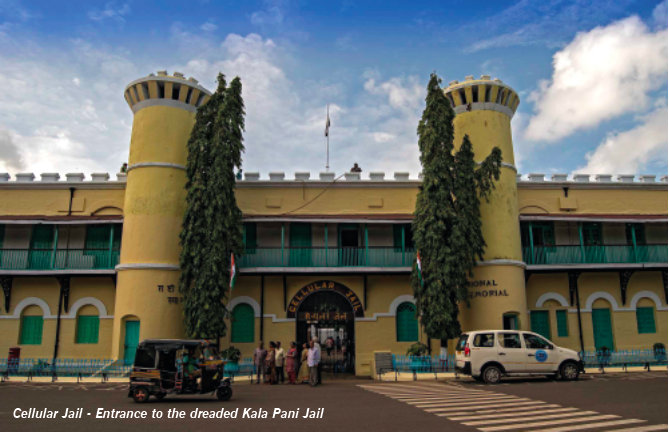
Today, the jailhouse comes alive with the ghosts of the past who briefly inhabit it during a gripping Sound and Light show. The sadistic British jailer struts around once again, unrepentant political prisoners, heads unbowed, are whipped at a whipping post while in a sacred spot, the condemned make peace with their Maker before slipping their neck into the noose.
There is not much to do in Port Blair apart from visiting the Archaeological Museum and the local market. One may also sail across the waters to Ross Island and browse the cob-webbed ruins of the little enclave the English built for themselves: tennis court, hospital, church, water treatment plant, printing press, cemetery and other facilities…
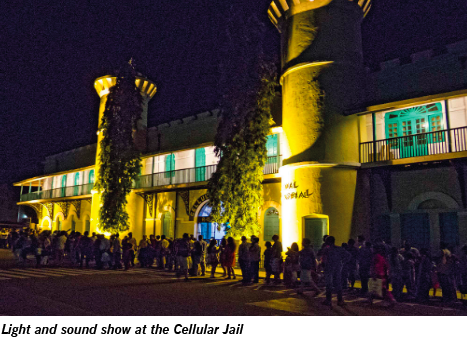
Lost in paradise
Back at Barefoot at Havelock, butterflies wove colourful arabesques in the air, while dense foliage and fruit trees came alive each morning with the call of parakeets, emerald doves and fairy blue birds. We woke up to days lived in harmony with nature, the supreme conductor. Fishermen would pull out to sea from isolated villages and the fresh catch would sizzle on our dinner plates. Hearty lunches were followed by relaxed noons spent in our villa and only the promise of flaming sunsets on the beach would draw us out of our comfort zone.
True to the spirit of the land, we trod barefoot on the sands, revelling in the feel of powdery grains slipping between our toes. Indeed, on Havelock’s cinnamon-coloured beaches, no one indulged in hard sell, trying to hawk local crafts or sun glasses. The resorts are staffed by locals, a gentle and happy people, conscious of living in a paradise of their own.
Rosy dawns saw us swimming, snorkelling and diving amidst the islands spectacular coral reefs while on our last day, we set off on a trek to Elephant Beach where elephants used to be trained for logging the forests. (Now that logging has been banned, the sandy stretch is often deserted except for a sprinkling of snorkelers and divers.) We then forged ahead through a tropical forest, listening to bird song, and later ducked into a forest of mahua trees where tall trees lay sprawled on the ground like drunken giants.
Beyond, more lovely cameos came alive; etched on a canvas of jade-green waters that lapped an untracked beach…
Fact File
Tourist traffic to the Andaman & Nicobar islands is restricted to the islands of Port Blair, Ross, Havelock and Neil.
One can reach the islands by air (the airport is at Port Blair) and sea.
By way of accommodation, The Nest is a no-frills Bed and Breakfast style accommodation, ideal for a day and night to take in the sights in Port Blair.
Barefoot at Havelock with responsible luxury as its mantra is an associate of the Bangalore-based Serai group.
The Nicobar group of islands are not open to tourism. Foreigners need special permits (obtained on arrival) to visit the Andamans. Indian tourists do not need a permit but must carry some form of identification.
For more information, visit the official website of Andaman and Nicobar Islands Tourism www.andamans.gov.in or https://barefootholiday.com

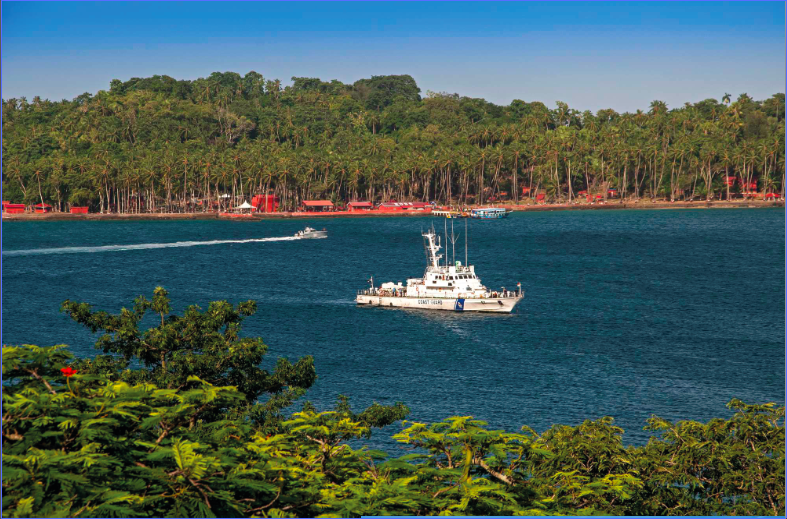
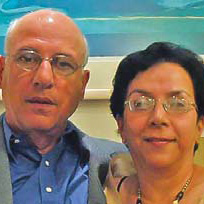 [/column]
[/column]